Living & Working in Kosrae
I’ve posted no news or photos of Kosrae for 10 weeks because I’ve been busy — working for two NGO’s and teaching at the College of Micronesia (COM). Two weeks ago, the college held its annual faculty feast shown in the photo above. Click here to watch Henry carve up the roasted pig and to hear the students sing. It’s wonderful to be part of Kosrae’s community. If you stay someplace long enough, you stop being a visitor and become a resident. Although I don’t plan to stay in Kosrae forever, I love living and working in this paradise.

One of my environmental projects involves Lelu Harbor, shown in the satellite photo to the left. This is the political and commercial center of Kosrae. It’s where about 1/4 of the residents of Kosrae live today.
A century ago, Lelu Harbor was a deep bay filled with corals, fish and giant clams. People caught all the fish they could eat. Ships anchored in this harbor to get drinking water from the sparkling streams and rivers that cascaded down from Kosrae’s mountains. For KSCO, I spent April hiking through Kosrae’s watersheds and kayaking in its mangrove swamps to measure water quality and turbidity. (Nice job!)
Near their headwaters, the streams are full of fish, shrimp, and fresh-water eels. If not for the Giardia, the water would be clean enough to drink.
I was disappointed but not surprised to find that, downstream from the residential areas, the rivers are polluted with agricultural runoff and animal waste.
All of these streams and rivers empty into the harbor. In the past, the runoff from these streams was flushed out to sea by a combination of northeast trade winds and semidiurnal tides. Unfortunately, this natural flushing was disrupted in the 1960s when the US Army Corps of Engineers built a causeway to connect Lelu Island with the main island of Kosrae. The harbor has begun silting up. Everyone in Lelu is aware of the decline in their harbor’s ecosystem. The fishermen complain that there are no more fish.


The only way to restore Lelu Harbor’s natural tidal flushing is to replace the causeway with a bridge. Until now, this idea was prohibitively expensive.
In May, the World Bank granted Micronesia $40 million to make its infrastructure climate resistant. Kosrae is hopeful that some of these funds can be spent on replacing Lelu’s causeway with a bridge. Although I probably won’t be here to watch its construction, I’ve been consulting with the engineers who may have the job of designing the bridge. Meanwhile, I’m working with KIRMA to update Kosrae’s Land Use Plan to enforce regulations involving the location of pig farms.
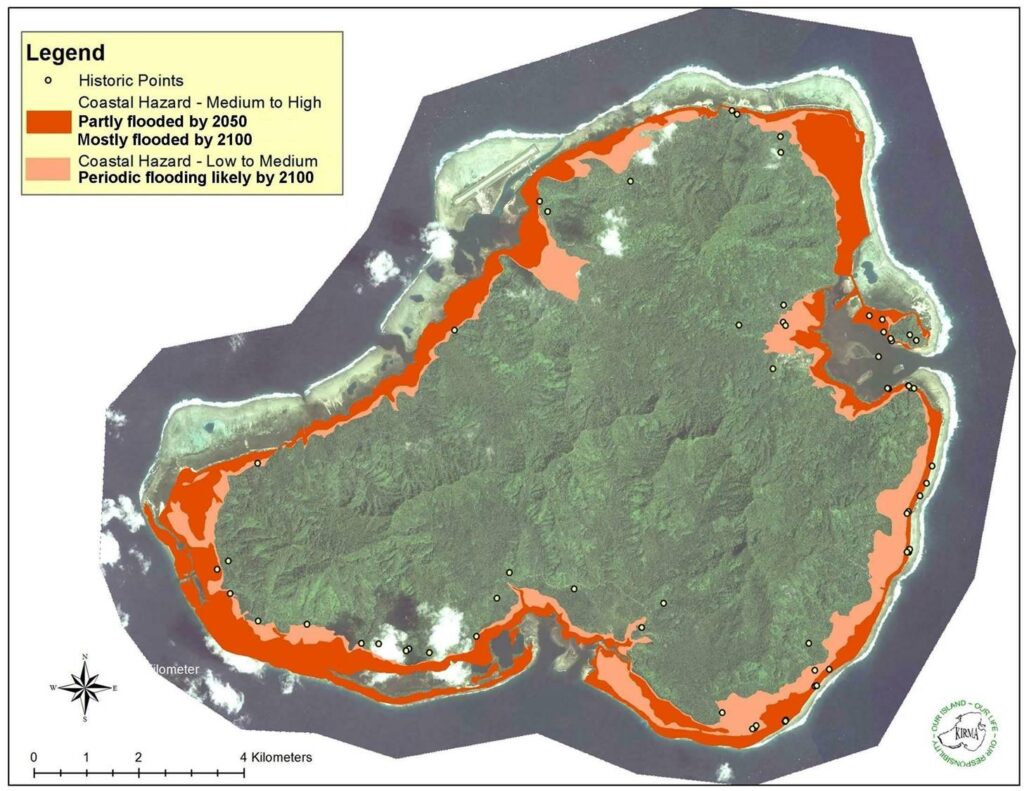
The other environmental problem that Kosrae faces is Sea Level Rise due to Climate Change. In the 15 months that I’ve been here, I’ve watched the ocean rise almost 2 centimeters. This Sea Level Rise is partly due to a La Niña condition which peaked last December. I’ve also seen the shoreline near my apartment retreat 30 centimeters. I didn’t understand the severity of Climate Change until I witnessed it myself. In the map above, the red zone shows the parts of Kosrae which are less than 2 meters above sea level. These areas will begin flooding in 2050. 90% of Kosrae’s residents live in these red zones.
For KIRMA and COM, I give frequent presentations about Climate Change and Sea Level Rise. This is a problem for all of the Pacific island nations. Fortunately, Kosrae is a high island. Although almost everyone lives along the shoreline today, there will be time for Kosraeans to move inland to higher ground. Between my work with KCSO, KIRMA and COM, I’ve been busy — and happily so!
Kosrae has no golf courses, movie theatres, bowling alleys or shopping malls. For entertainment, people pile into pickup trucks and ride around singing, joking, eating and waving at friends. I don’t own a car so I hitch-hike everywhere. My favorite rides are in pickup trucks.
For several months, I’ve been doing weekly presentations about Kosrae via Zoom for Rotary clubs and other organizations across America. My next presentation will be on June 7 at 7:00pm, Pacific time. It will be hosted by the Mill Valley Public Library. If you’d like to hear more about Kosrae, meet me online, or just ask questions, please join me next Monday night. To register for this event, click here. There are 100 seats available for this event. I hope to see you there!

My time in Kosrae will soon come to an end. Unless United cancels my flight, I will leave Kosrae on July 19.
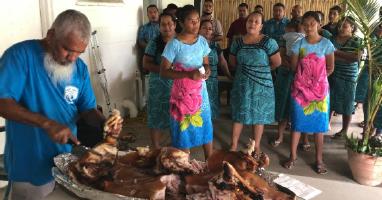

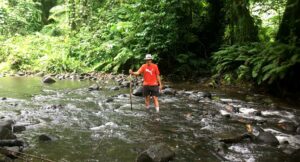


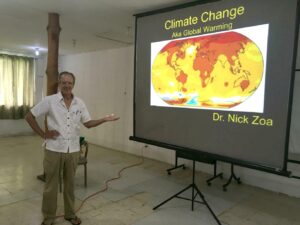

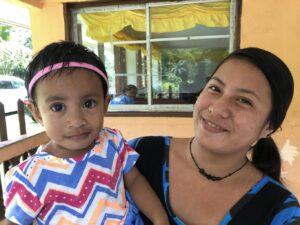
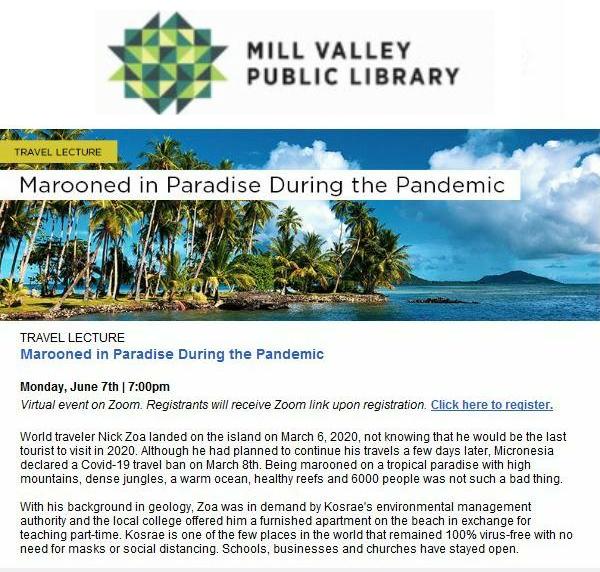
Nick,
Once again, your posting is most interesting, and your presentation certainly puts things in perspective. Your contribution to the wellbeing of the residents of Kosrae is obviously appreciated. They certainly appear to eat well…the pig roast made my mouth water.
Stay healthy,
Bill
Hi Nick,
As usual, wherever you find yourself, you have found great ways to contribute. You should writ a book!
Questions:
Could you explain about the Giardia?
I looked at your satellite photo, and also on Google Earth, but couldn’t identify just where that blocking causeway is. Is it by the Blue Hole?
Thanks Nick,
Marvin & Trish
Marvin, please look again at the satellite photo on which I’ve indicated the location of the Lelu causeway.
As usual, you have both entertained and informed me. I think maybe you will stay a longer time in Kosrae or return to build that bridge. I am now settled in Salerno. Best wishes.
Great reading your column again. Tomorrow on the way by car from Ft. Lauderdale to Denver, with a stop in Gainesville, Pensecola, New Orleans, Dallas, Amarillo, and Santa Fe. Then onto friends in Iowa and Wisconsin and a two week stay in Boston. Then onto Washington, D.C. and back down to Florida.
I hope I can get your zoom call. Will let you know of future plans.
Kevin O’Keefe
First, happy birthday! Second, residents of Kosrae obviously take climate change seriously. Does this affect their attitude toward nations like the U.S. and China whose policies have been shown to accelerate the planet’s warming?